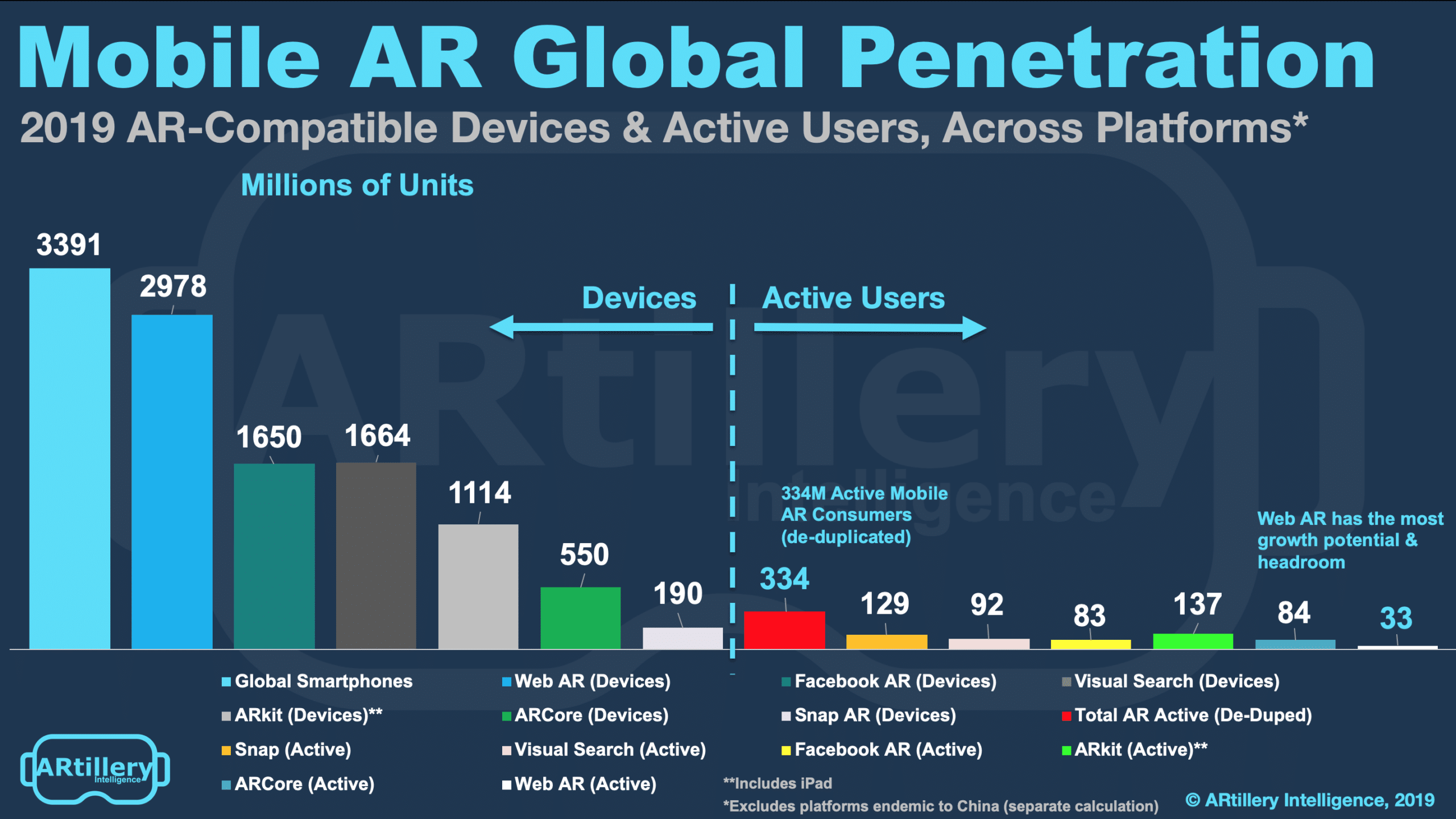
Data Point of the Week is AR Insider’s dive into the latest spatial computing figures. It includes data points, along with narrative insights and takeaways. For an indexed collection of data and reports, subscribe to ARtillery Pro.
For Snap, 2019 will be remembered for a sizeable rebound. We don’t know where it will go from here, but the company has demonstrated quite a turnaround from its beleaguered post-IPO run. It now seems to have gained its footing as a public company. And AR is partly to thank.
Snap’s stock price reached its IPO high-watermark on Thursday after positive Q2 earnings. Lingering below that point over the past year isn’t great, but it’s now moving in the right direction. And it attributes part of its performance to the user engagement and revenues brought by AR.
Specifically, Snap CFO Derek Anderson reported on last week’s earnings call that new AR users accounted for 7-9 million of the 13 million daily active users it gained, which now total 203 million. That makes active AR users comprise up to 70 percent of its overall daily active users.

This makes sense as AR is naturally aligned with Snap’s identification as a camera company. Beyond marketing and self-designations, there’s substance behind it if you consider the heavy camera affinity of its user base. The smartphone camera is where AR lives (for now).
Before this week’s milestone, Snap reported 70 percent of its 190 million daily active users are AR daily active users, which is aligned with the above percentages. No other company has a larger share of users that actively engage with AR. So you could say it’s a primary Snapchat use case
Pokemon Go has seen more active users in the past, but AR is a minor component of the experience (depending how you define AR). A more apples-to-apples comparison is Facebook, which has more total users (1.5 billion) but fewer AR lens active users (we estimate 83 million).

So given AR’s primacy at Snapchat, it’s leaning into it. Engaged AR users is the tip of the spear for what follows: ad revenue. Not only do lenses increase user engagement and session time (ad revenue drivers generally) but they’re a natural format for directly-monetized brand lenses.
This is where Snap got an early lead in terms of innovating AR lenses as an ad format. It discovered, and since validated, that the format can demonstrate products in immersive ways. That plus AR’s ability to span the consumer purchase funnel is resonating with brand advertisers.
Our research arm, ARtillery Intelligence estimated in its AR revenue forecast that Snap made $246 million last year on branded lenses. That makes it an AR revenue leader. And now that AR is also buoying its market cap, we’ll see Snap continue to double down on the technology.
For deeper XR data and intelligence, join ARtillery PRO and subscribe to the free AR Insider Weekly newsletter.
Disclosure: AR Insider has no financial stake in the companies mentioned in this post, nor received payment for its production. Disclosure and ethics policy can be seen here.
Header Image Credit: Snap, Inc.
